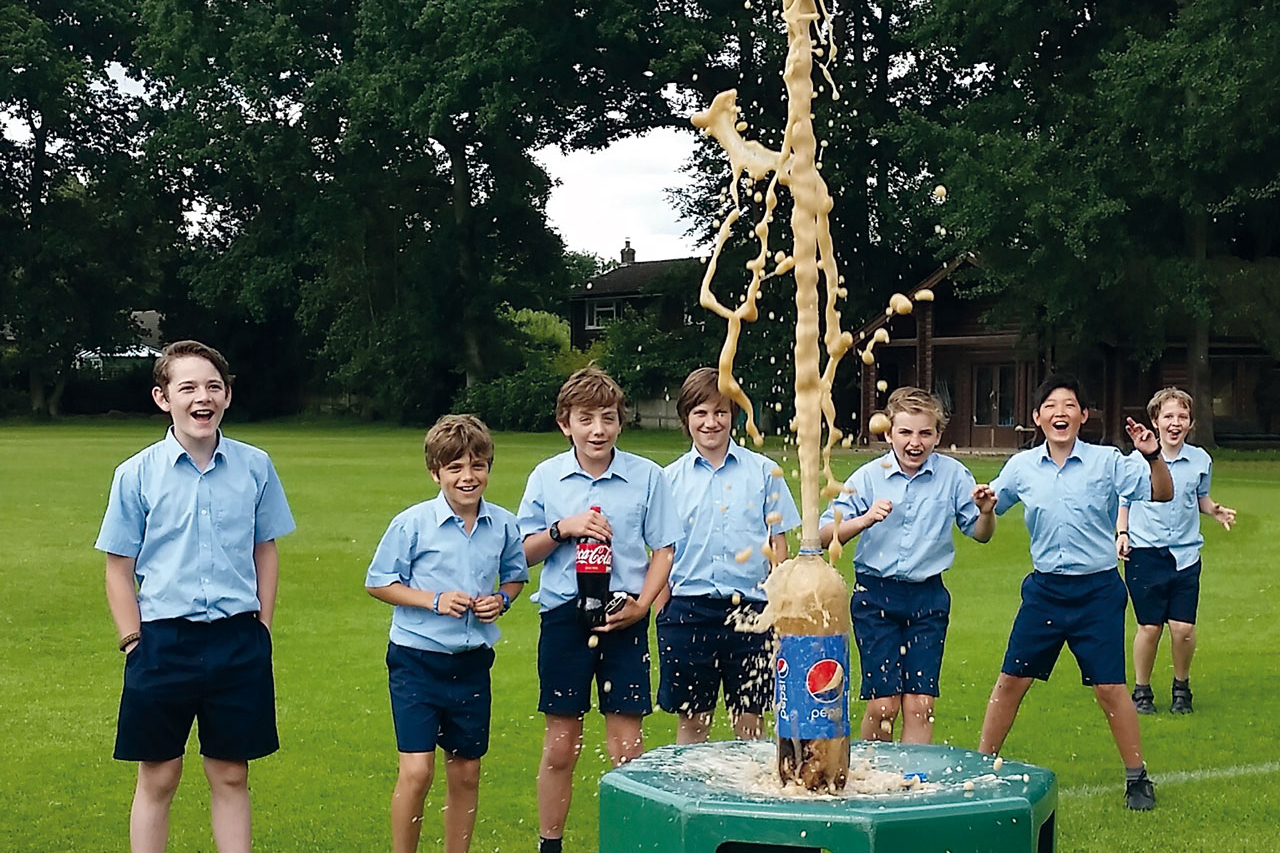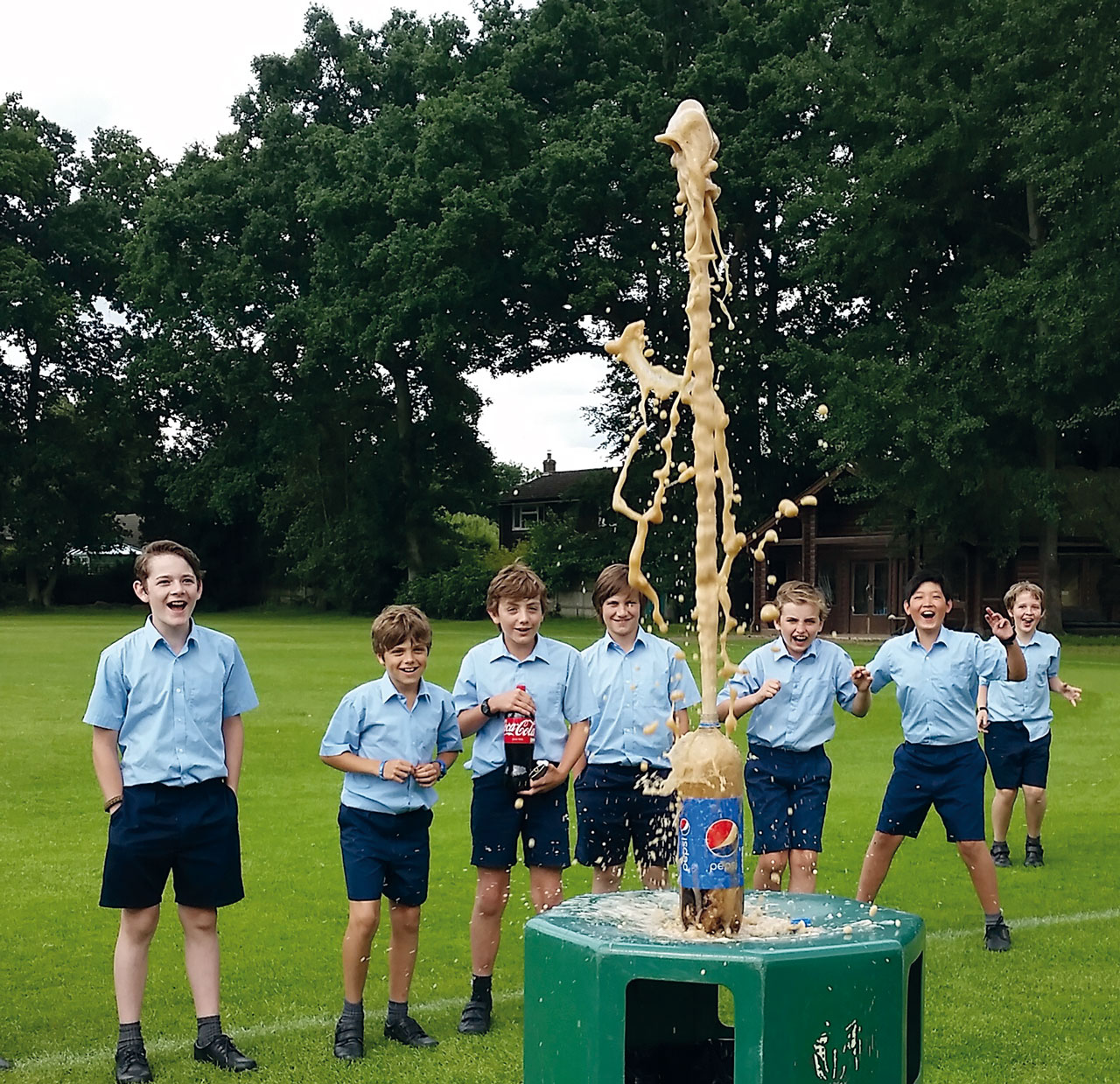
- HOME
- EDUCATION
Confessions of a Science Teacher from Papplewick
Mark Burley, Head of Science at Papplewick School, Ascot, explodes a few myths
By | 6 years ago
The science lab here at Papplewick is unique among prep schools. It’s teeming with life, and that’s not just the boys.
Our belief that a love of science comes from hands-on experience – experiments, collecting data, observing events – has led to an explosion (sometimes literally) of activity in our first-floor lab.
The most popular club at the school, with over 100 members, is the herpetology club. Boys can buy snakes or lizards for a small sum and care for them as well as studying them in class.
Ten years ago, the club boasted a friendly python who was introduced to the school by our science teacher, Mr Elkington. Today we have a whole community of creatures, including frogs, bearded dragons (30 and counting), geckos, 60 cornsnakes, numerous chameleons (who breed regularly), fish, tarantulas and millipedes. I hasten to say that none of our creatures are dangerous to the boys.
In the summer there’s a very particular and competitive sports day – for our hissing cockroaches. The boys race six at a time in a channel and there’s plenty of vocal support for (and from) the participants.
Life in the herpetology club is always lively, but we’ve only had one escapee to date – a corn snake slithered off. Luckily he didn’t get far and was found in a comfortable spot behind a cement bucket in our new boarding house, spotted by a friendly builder who alerted the search party of boys to his hiding-place.
Class work includes studying the breeding process of the reptiles and insects. Boys learn basic genetics, trying to breed different kinds of frogs and bearded dragons in unusual colours. Year 8 scholars dissect and study rats and frogs, and there’s plenty of pond-dipping in the summer months. In addition, boys study plant populations using a quadrat, so that they can be identified and counted in an exact area.
Our rocket club is also hugely popular. The boys design, make, spray-paint and launch their own rockets – sometimes as high as 200 metres and often soaring out of sight of the launch pad. Luckily, our grounds opposite Ascot Racecourse are large and the rockets alway parachute down within the school perimeter.

In what we call the ‘Coke and Mentos’ experiment, Mentos (peppermint sweets) are dropped into cans of Coke outside, and we watch as the liquid explodes two to three metres into the air in what is known as an ‘irreversible reaction’. Another reversible and irreversible reaction is studied by passing a lab gas through a homemade liquid soap solution, scooping up the bubbles in our hands, setting them alight and watching the flames go up through the bubbles. You can imagine how much the boys enjoy this kind of experimentation.
Experiments encourage a love of science, so while these light-hearted activities might seem like just a lot of fun, there’s a serious educational side to them too. We record the experiments and interpret the results with graphs, helped by the IT department and we push the boundaries by seeing what might happen if we change the process. All the boys are encouraged to experiment themselves using equipment in our two purpose-built, well-equipped laboratories.
I’m delighted to say that our efforts to engage our pupils in scientific activity from a young age have proved to be extremely fruitful and many of our boys – 26 in the last two years – earn scholarships to independent senior schools.
This article was originally published in the spring/summer 2018 issue of School House.
READ MORE: Confessions of an Art Teacher from Aldro | Confessions of a Boarding School Matron



